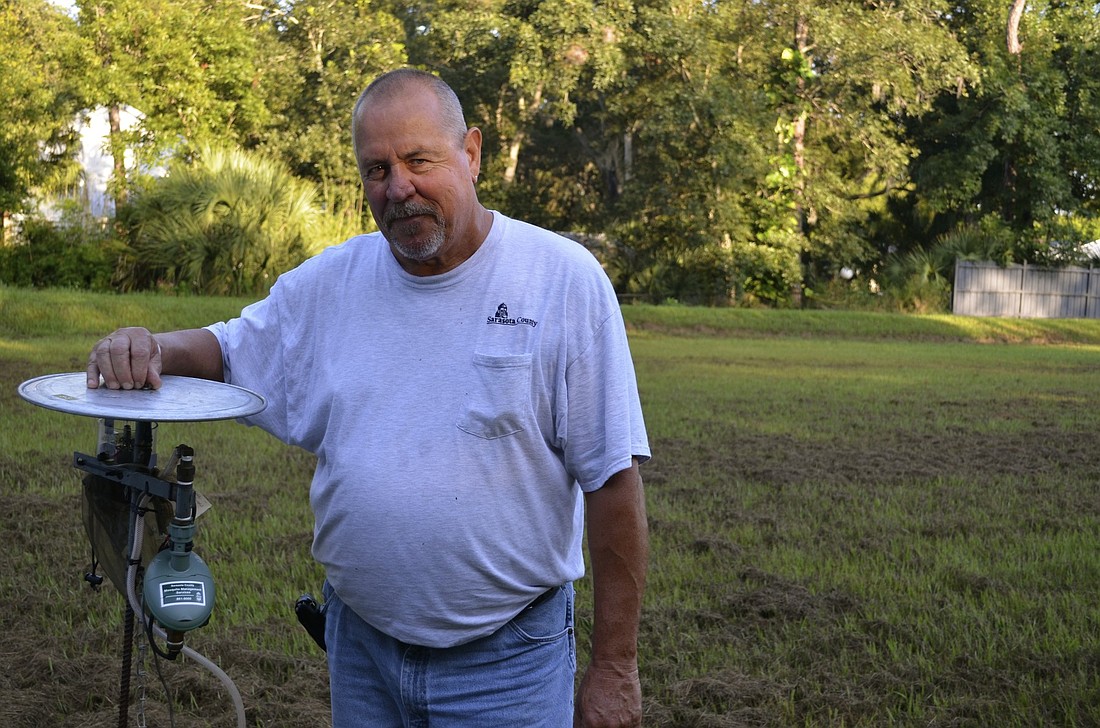- July 26, 2024
-
-
Loading

Loading

Every day at 11 a.m., there is a meeting in the situation room of Sarasota County Mosquito Management. Matt Smith, the program manager, sits at a large round table surrounded by projections of computerized maps. The pictures of mosquito species that line the walls resemble “Most Wanted” posters.
At Smith’s side are John Eaton, field operations supervisor, and Wade Brennan, an environmentalist. Together, they sift through as many as 100 mosquito complaints from the day before. They combine this real-time intelligence with scientific reports of mosquito activity that come from mosquito-trap samples and weekly blood samples from sentinel chickens located in 13 strategically placed locations around the county. They use this data, along with intuition and field experience, to give orders to their mosquito technicians who patrol 83 zones covering 556 square miles to locate and eliminate the mosquito threat.
Mosquitoes can carry potentially deadly diseases, such as West Nile viral encephalitis. And, although the Sarasota County Health Department reports zero cases of mosquito-borne disease during the past two months, 2013 has been a particularly active season for mosquitoes.
“We haven’t had rainfall like this since 2006,” Eaton said. “Normally we’ll go through 43 drums of chemical in one fiscal year, but this year we’ll go through 60.”
More rainfall means more mosquitoes. The insects lay their eggs in standing water, turning lakes, swamps and water-collecting man-made objects into breeding sites. Eaton says the normal rate of 30 to 50 mosquito complaints a day has jumped to more than 100 some days this summer.
Eaton directs the daily mosquito-spraying operations. He inputs reports of mosquito activity from residents onto an interactive map that can be uploaded to an aircraft for aerial spraying missions. Crews in the field use the data to visually identify mosquito outbreak hot spots and target spraying operations.
Eaton says there are 36 species of mosquitoes in Sarasota County, 10 of which are the main drivers of spraying operations. He commands 14 employees, along with an aircraft and three contractor-operated trucks.
The program has been able to stay within its $3 million annual budget despite having doubled spraying operations this year.
With a big uptick in spraying, Mosquito Management says safeguards are in place to limit the public’s exposure to insecticides.
According to mosquito technician John Goreham, state law requires stringent standards be met before spraying is allowed.
“It’s different from the old days when we would just spray,” said Goreham.
He says less-powerful insecticides are used in urban areas and around schools to make spraying safer for the public.
Mosquito technicians document information, such as the type of chemical used, where and how much, and provide sufficient evidence that a spray was warranted — such as a landing rate of more than one mosquito per minute or the presence of more than three larvae within one zone.
“To determine the landing rate, we sacrifice our own bodies,” Goreham said. “We’ll stand out there for five minutes and determine how many mosquitoes land on us per minute. Anything more than one per minute and we spray.”
Goreham, who is responsible for four zones in the North Sarasota County area, also uses a local species of fish called gambusia to fight mosquitoes.
“Gambusia eat up to one-and-a-half times their weight in mosquito larvae every day,” Goreham said. “I harvest them every morning and deposit them in standing water, such as retention ponds or abandoned pools, in my zone. It’s a way to kill mosquitoes without polluting the environment.“
Although Sarasota County has so far escaped the outbreak of mosquito-borne disease that hit the Florida Panhandle this year, Eaton cautions that it is not unusual for diseases to reveal themselves in the fall and insists that he and his team are ready for the worst.
Sarasota County residents can call 861-5000 to report mosquito activity around their home or place of business.
THE FIVE D’s
Dusk and dawn — Avoid being outdoors when mosquitoes are most active during the dusk and dawn hours.
Dress — Wear clothing that covers most of your skin.
DEET — When the potential exists for exposure to mosquitoes, repellents containing DEET are recommended. Picaridin, oil of lemon eucalyptus and IR3535 are other repellent options.
Drainage — Rid the area around your home of standing water, which is where mosquitoes can lay their eggs.